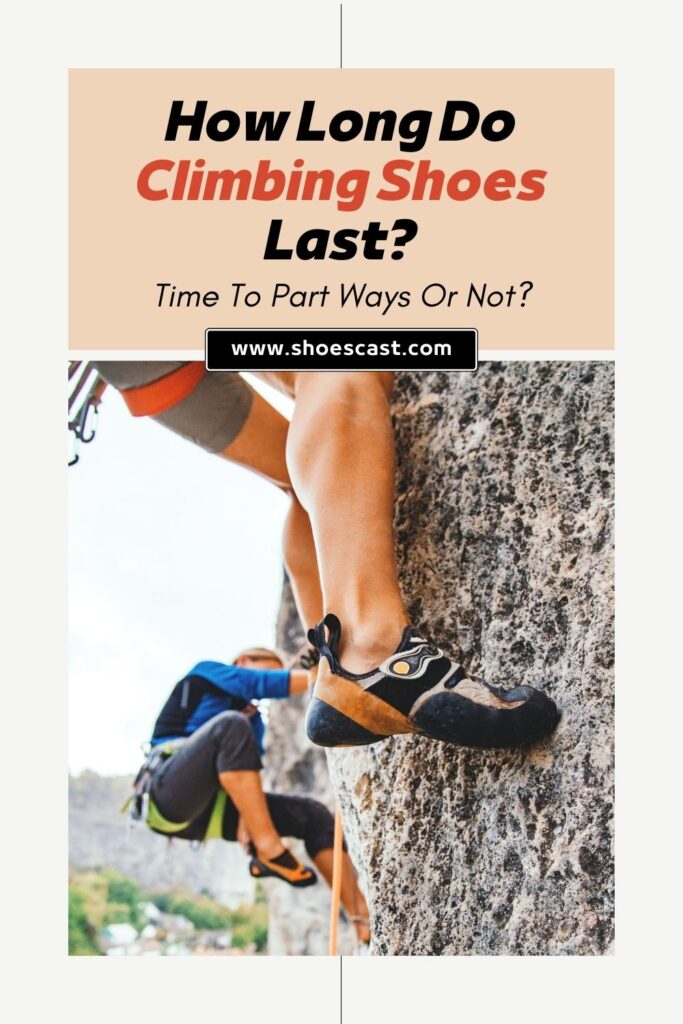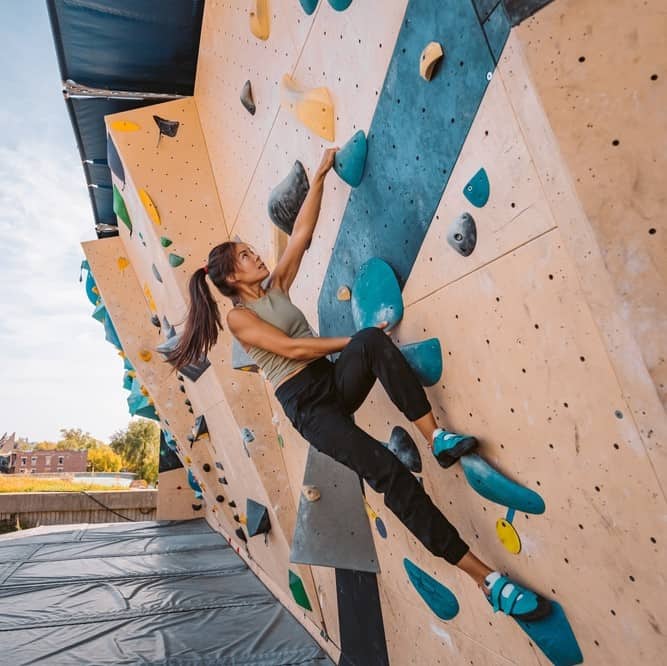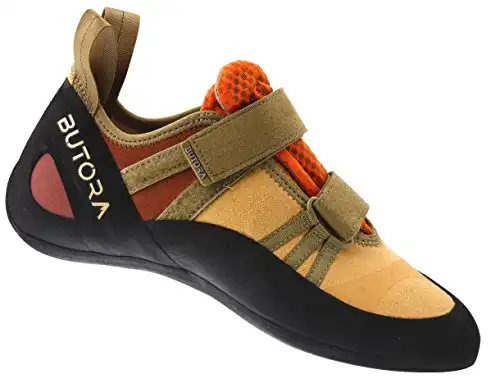Whether you’re a devoted climber or someone who goes climbing every now and then, your climbing shoes are guaranteed to start showing signs of wear over time. Once the damage reaches the breaking point and your climbing shoes are beyond repair, you might need to throw them away. How long do climbing shoes last, though?
Now, you’re bound to get answers ranging from three months to nine months. That seems like quite the range. This huge difference between the two answers doesn’t really make you understand whether your climbing shoes are going to serve you as much as you need them to.
Rather than searching for a specific number, you should search for what causes climbing shoes to wear down or what affects the longevity of a climbing shoe’s life (how dramatic does that sound?).
When you figure out the reason why climbers rotate climbing shoes depending on the amount of wear they’re getting, you’re going to come to terms with the amount of wear you’re witnessing on your shoes. Don’t blame the brand, blame the surface, the technique, and the frequency of climbing.
When you observe your climbing shoes, you’re going to notice that the wear shows around the rubber, the upper, the rand, and the overall fit of the shoe. Knowing that, when you start wondering “how long do climbing shoes last”, remember that the answer depends on you, for the most part. Keep on reading to uncover what we mean by that!
How long do climbing shoes last?
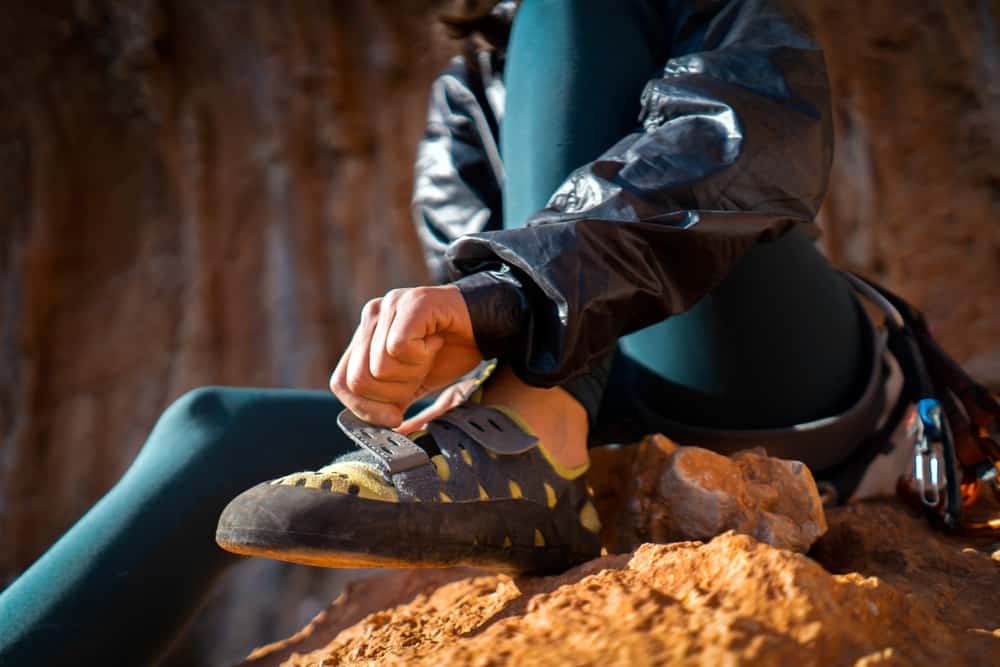
We’re going to agree that climbing shoes usually last three to nine months, for now. Whether you’re climbing outdoors or indoors, you’re bound to start noticing signs of wear on your climbing shoes after three to nine months.
When you do that, you’re going to need to figure out whether you’re better off repairing them or replacing them.
And, that’s the thing – climbing shoes aren’t an essential piece of claiming safety gear, but you never know when you might experience a broken closure, a ripped seam, or a delamination that can cause you to tumble down the rock or the climbing wall, depending on where you are.
With that warning in mind, there are a few things that affect the golden years of your climbing shoes. For example, how frequently do you go climbing? What surfaces are you climbing on? What’s your climbing technique? And, what’s the quality of your climbing shoes?
Read everything you need to know down below!
1. How frequently do you go climbing?
We already brushed over the fact that you’re the one to blame for your climbing shoes starting to wear down before they reach the three-month mark. We’re kidding! But, we’re not kidding about the fact that the frequency of your climbing escapades does affect the longevity of your climbing shoes.
We’re not saying anything you haven’t heard before, though. The more often you go climbing, the more times you expose your shoes to different factors that might damage them.
The rubber soles are the first ones to go because they’re constantly rubbing off on sharp rocks and other sharp surfaces depending on where you are. The rest of the shoe wears down significantly slower.
However, when you’re practicing your climbing skills every single weekend, you’re bound to notice the wear sooner rather than later.
2. What surfaces are you climbing on?
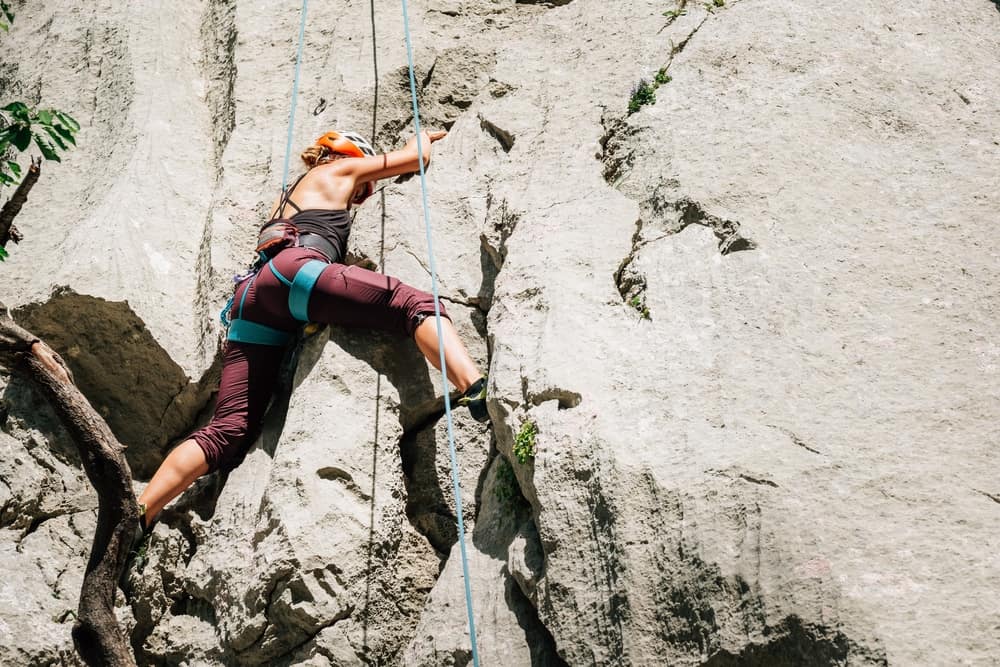
Of course, the climbing surface affects the answer to your “how long do climbing shoes last” question, too. On one hand, when you’re climbing outdoors, you’re faced with sharp rocks, rough surfaces, and dangerous terrain that’s not recommended for beginners.
So, your climbing shoes are exposed to different effects that are guaranteed to wear your shoes down faster than you might think. To make matters even worse, when the rubber on your shoes starts to wear down, the rest of your shoe follows suit.
On the other hand, when you’re climbing indoors, you’re conditioned to think that your feet and your shoes are safe. However, the climbing walls that are found at these practice places are meant to replicate the rough rocks and other dangerous (but grippy) surfaces.
And, the climbing shoes that are meant for indoor climbing are made with softer rubber that provides better friction. But, softer rubber wears away faster, too. Sure, there are things you could do to prevent that from happening (more on that down below), but it’s something to keep an eye on, nonetheless.
3. What’s your climbing technique?
We’re not here to attack your climbing technique, especially if you’re a beginner climber. But, your climbing technique does affect your climbing shoes’ longevity because it determines whether or not you scrape your feet against the surface.
When you scrape your feet against the surface, you scrape the rubber and the rinds of your climbing shoes. To combat that, you should try to keep your feet away from the surface while you’re trying to position yourself (rather than dragging them against the surface).
That being said, you should also try to use your toes and the edge of your foot when you’re positioning yourself rather than using the entire foot. Make your movement intentional and save your shoes from unnecessary damage.
4. What’s the quality of your climbing shoes?
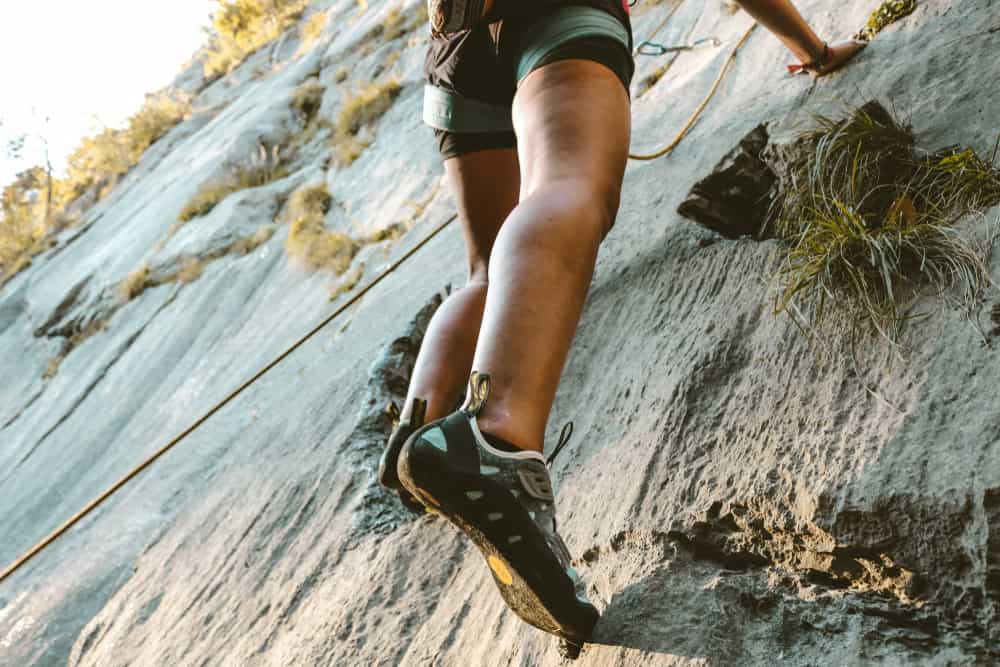
Last but not least, the quality of your climbing shoes does affect whether or not they’re going to wear down before you can even climb to the top of the mountain.
We’re not suggesting you should purchase the most expensive climbing shoes on the market, especially if you’re a beginner climber. We are, however, suggesting you should do your research, save some money, and purchase climbing shoes that are hardwearing, supportive, and protective.
Now, the best climbing shoes are made with high-quality rubber. Vibram rubber is seen as top-notch in the climbing circles, and we couldn’t agree more! Get your hands on Vibram rubber climbing shoes and you’re guaranteed to get your money’s worth.
How to make your climbing shoes last longer?
1. Make sure to choose the right climbing shoes
Choose between beginner climbing shoes, intermediate climbing shoes, and advanced climbing shoes depending on the climbing surface. When you, for example, wear beginner climbing shoes (Butora Endeavor Rock Climbing Shoe for the win!) on narrow footholds and cracks, you’re exposing them to wear around the soles and the rands.
When you get the wrong climbing shoes, you’re guaranteed to experience excessive wear.
Whether your climbing shoes aren’t fitting you properly, or they aren’t appropriate for the climbing surface you’re climbing on (or even the level you’re on), there’s a chance they might get damaged over time.
2. Remember to use the right climbing technique
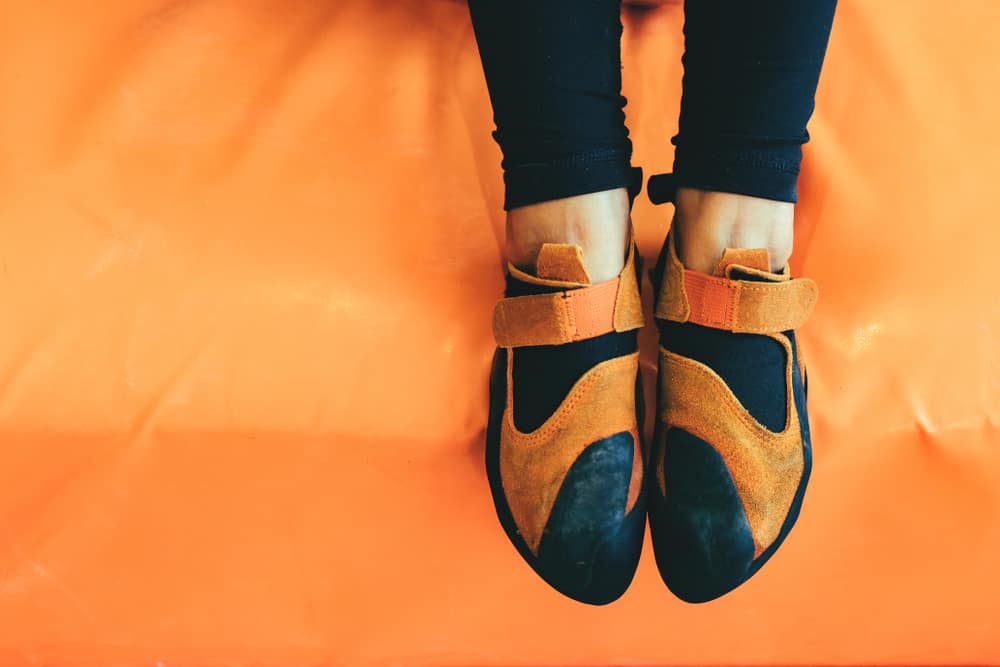
We brushed over the fact that the wrong climbing technique can cause damage to your climbing shoes and cause them to wear down pretty quickly.
While there’s nothing wrong with talking things slowly when you’re a beginner, you should try to protect your shoes by avoiding doing some of the most common climbing mistakes.
First off, stop scarping your toes against the climbing surface when you’re trying to prop yourself up. We know you think you’re safer when you’re closer to the surfaces, but that’s not necessarily the case.
Secondly, stop sliding your foot down when you’re trying to reach the hold. Both scarping and sliding are bound to wear your shoes down around the rubber, the side of your shoes, and the soles of your shoes.
Thirdly, try switching to your toes when you’re moving from one hold to the other. We know you think you’re safer when you’re using the entire floor, but try practicing using your toes and the side of your foot (rather than the entire foot).
That being said, try to observe where you’re putting your feet and try to position them right the first time.
3. Don’t forget to resole your climbing shoes every now and then
One of the best ways to ensure your climbing shoes last longer has to be one of the most obvious ones, too – simply take care of them.
On one hand, don’t forget to clean them after every practice, wear them when you need to (don’t wear them while doing other activities), store them properly when you’re not wearing them, and wear them on clean feet and clean socks. Easy enough, right?
On the other hand, don’t forget to resole them every now and then to prevent them from completely breaking apart. When you notice the rubber wearing down, becoming thinner, or torn, resort to resoling as a cost-effective way to make them last longer.
While you’re planning on resoling them, don’t shy away from starting to save money to get a brand-new pair either. After resoling your shoes for a year or so, they should be ready to retire and leave room for new ones.
When to throw your climbing shoes away?
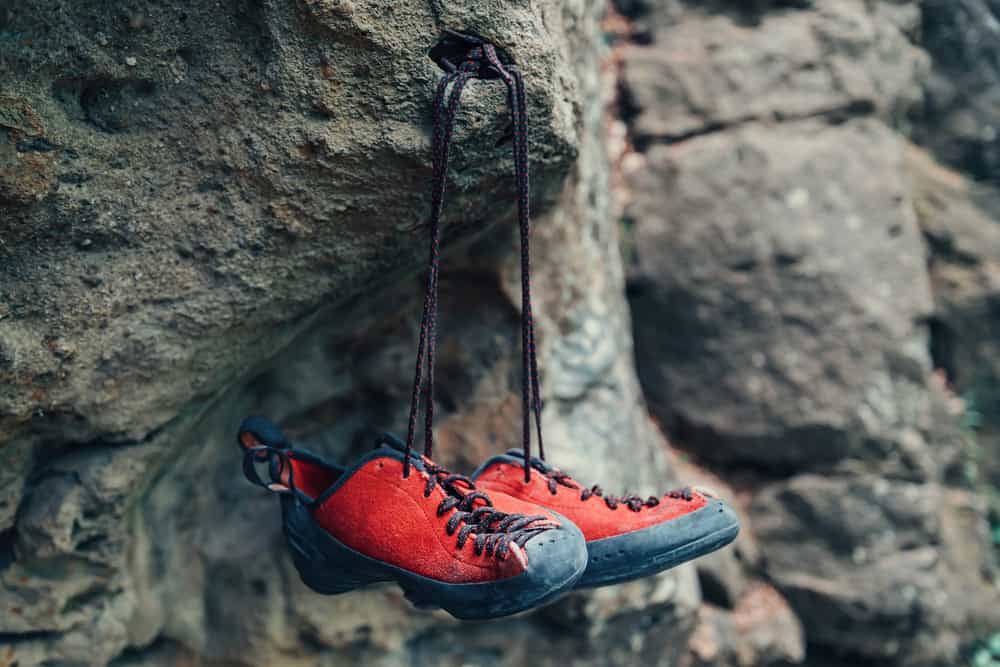
Now, you’re probably worried whether your climbing shoes have come to an end. On the off chance that the rubber’s falling apart, they probably have. But, how do you actually know when you’re supposed to throw them away?
When the rubber becomes too damaged to resole, when the rinds become irreparable, when the soles start breaking apart, and when the toe box starts showing your toes, you might need to start searching for new climbing shoes. Good luck!
